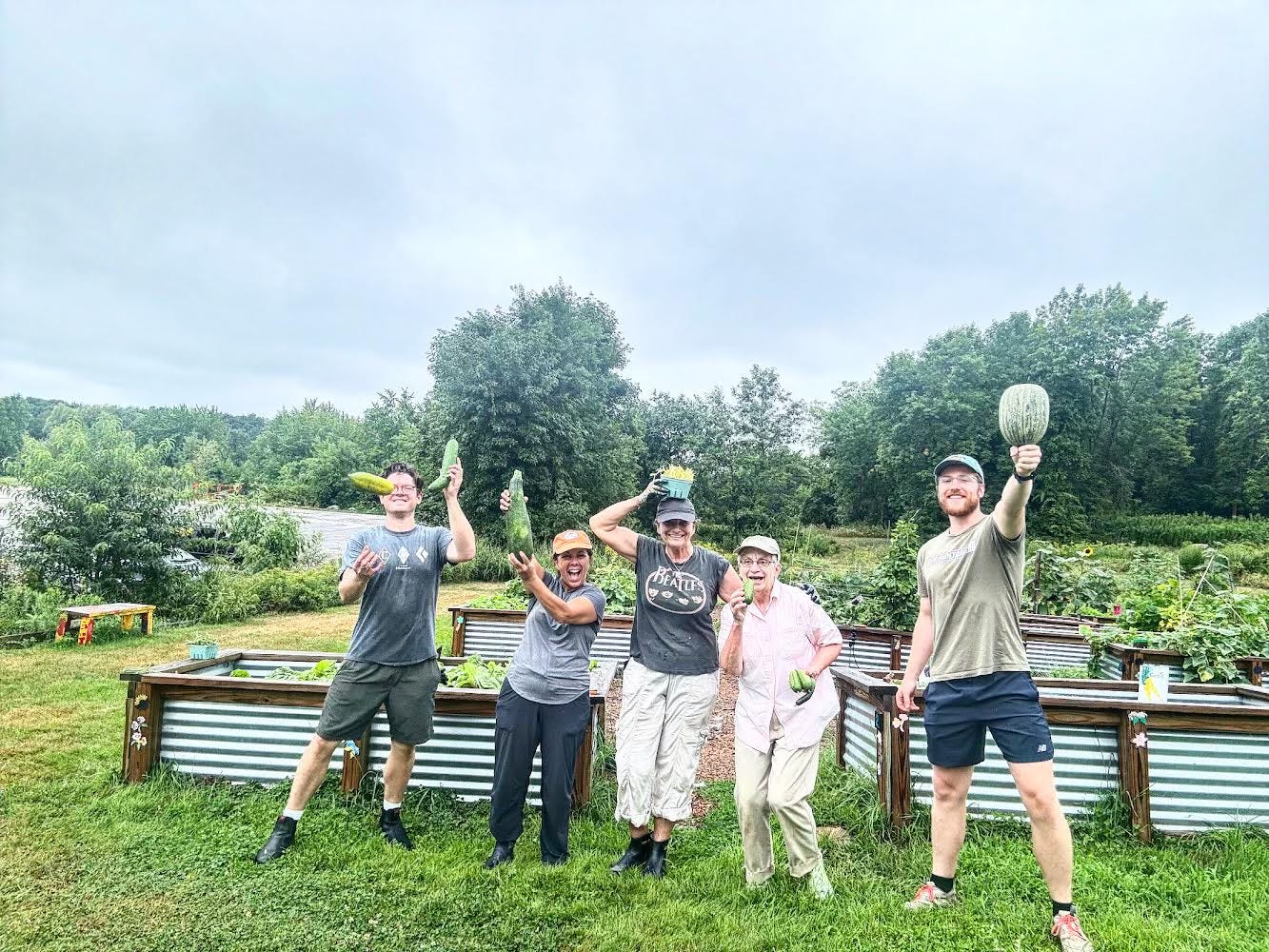During World War II, Americans were called upon to support the war effort by growing their own food. This led to the rise of Victory Gardens, a massive movement that saw over 20 million gardens flourishing in backyards, city lots, and community spaces. By 1945, these gardens produced 40% of the nation’s fresh produce, with the majority of them tended by women, children, and seniors while many able-bodied men were at war.
.
Victory Gardens weren’t just about growing food—they were about building resilience, strengthening communities, and taking charge of one’s health and sustenance. Fast forward to today, and we find ourselves facing new challenges: food insecurity, chronic illness, and a disconnected food system reliant on industrial supply chains. So, what if we could bring back the spirit of Victory Gardens—but with a modern twist? Enter the Home Gardener Trade Program, a revolutionary way to grow, share, and sustain food independence within our communities.
Victory Gardens Meet Barter Economy
Imagine if every home gardener in your neighborhood could trade their extra tomatoes for fresh herbs, swap zucchini for berries, or exchange seeds for seedlings. Just like the Victory Garden movement, where Americans banded together to feed their communities, a modern home gardener trade program allows us to support one another, reduce waste, and expand what’s growing in our own backyards.
A trade network isn’t just about food—it’s about rebuilding local food resilience, promoting regenerative growing methods, and ensuring that no one has to rely solely on the industrial food system for their nutrition. It’s also about making gardening more accessible to those who might not have all the tools, seeds, or knowledge to get started.

How to Start a Home Gardener Trade Program
1. Gather Your Community
Back in WWII, Victory Gardens were a nationwide effort backed by government campaigns—but they were built by the people, for the people. Today, you can start small and local by connecting with neighbors, community gardens, and gardening enthusiasts through social media groups, farmers’ markets, and word of mouth.
2. Decide What to Trade
Victory Gardeners shared their harvests, and modern gardeners can do the same! Your trade program can include:
Fresh produce (fruits, vegetables, herbs)
Seeds, seedlings, and cuttings
Gardening tools and supplies
Compost, soil, and natural fertilizers
Preserved goods (jams, pickles, dried herbs)
Garden-related crafts and recipes
3. Choose a Trade Model
Just like community food rationing in the 1940s, a structured system ensures fairness and participation. Consider:
Casual Swap Days – Neighbors bring what they have and take what they need.
Barter System – One-to-one trades based on mutual agreements.
Point-Based or Token System – Earn credits for what you contribute and spend them on other items.
Online Coordination + In-Person Meetups – Use a Facebook group or app to arrange swaps before meeting in person.
Photo by Marcela Laskoski on Unsplash
4. Host a Victory Garden Trade Event
WWII-era Victory Gardens were not just about gardening—they were social hubs where people gathered to learn, share, and grow together. Hosting monthly community swap events at a local park, farm, or community center will keep participation high and engagement strong.
Make it fun by:
Including educational workshops on organic growing, composting, and food preservation.
Inviting local farmers and experts to give talks on regenerative agriculture.
Encouraging kids and seniors to participate, just like in the original Victory Garden movement.
Organize a Trunk Food Swap like the Trunk and Treats that have become popular, organize on community pages online, or even with your local township and organizations.
5. Partner with Local Organizations
Victory Gardens thrived with the support of schools, churches, and local governments. Today, your trade program can partner with community gardens, farmers’ markets, food pantries, and sustainability groups to broaden its impact.
Why This Movement Matters Today
During the Victory Garden era, people took personal responsibility for their food supply and health. They didn’t wait for grocery stores or government solutions—they grew what they needed, shared what they had, and strengthened their communities in the process.
Today, we face different but equally pressing challenges: rising food costs, chronic disease, and supply chain disruptions. By reviving the Victory Garden mindset, we can:
✅ Ensure fresh, organic food is accessible to everyone
✅ Reduce food waste by sharing surplus
✅ Encourage regenerative, sustainable growing practices
✅ Build healthier, more self-reliant communities
Join the Movement!
Victory Gardens once fed a nation—now, we can bring them back to heal a nation. Whether you’re a seasoned gardener or just getting started, forming a Home Gardener Trade Program in your community is a step toward reclaiming food sovereignty, promoting better health, and reviving the Victory Garden spirit for the 21st century.
Join the Victory Garden Alliance and start trading in your community today!
Visit Victorygardenallaince.com and Join the movement!










